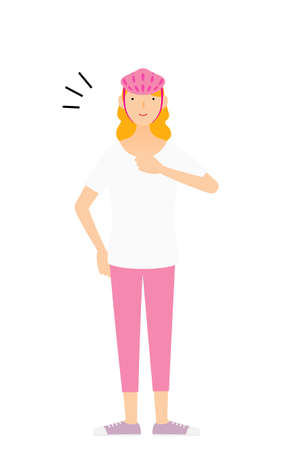Understanding Stretch Marks in Teenagers
Stretch marks, known medically as striae, are a common skin concern for many teenagers across the UK. They appear as streaks or lines on the skin, often with a slightly different texture or colour from your natural skin tone. Typically, stretch marks develop when the skin is stretched rapidly, causing the elastic fibres beneath the surface to break. This stretching can occur during periods of rapid growth, which is especially common in adolescence due to puberty-related changes.
During these teenage years, both boys and girls may experience sudden growth spurts, weight fluctuations, or muscle development — all of which can contribute to the formation of stretch marks. Hormonal changes also play a big part, making some teens more prone than others. Common areas where British teens notice stretch marks include the thighs, hips, stomach, breasts, and upper arms.
It’s important to remember that stretch marks are incredibly common among UK teenagers. In fact, studies suggest that up to 70% of young people will develop stretch marks at some point during their teenage years. While they might feel self-conscious about them, it’s worth emphasising that these marks are a normal part of growing up and nothing to be ashamed of.
Emotional Impact and Body Confidence
For many teenagers in the UK, stretch marks can have a significant emotional impact, particularly at an age when self-esteem is already fragile. The pressure to look a certain way is intensified by social norms and media portrayals of “perfect” bodies. British teens are constantly exposed to influencers, celebrities, and adverts that often show airbrushed skin, making natural changes like stretch marks seem abnormal. This can lead to feelings of embarrassment, anxiety, or even shame.
The Psychological Effects on Teenagers
It’s not just about appearance—stretch marks can affect mental wellbeing too. Many young people may start to avoid activities such as swimming, sports, or changing for PE at school because they feel self-conscious. Some may experience teasing or negative comments from peers, which can further damage their confidence and sense of self-worth.
Influence of UK Social Norms and Media
| Influence | Impact on Teens | UK Cultural Context |
|---|---|---|
| Social Media Trends | Comparison with filtered images; pressure to conform to beauty ideals | Popular platforms like Instagram and TikTok highlight flawless skin, increasing body image concerns among British youth |
| Celebrity Culture | Desire to emulate well-known personalities who rarely show imperfections | UK tabloid press and reality TV often scrutinise appearances, reinforcing unrealistic standards |
| Peer Opinions | Fear of judgement or teasing from classmates or friends | School environments in the UK can be challenging due to banter or bullying around appearance issues |
| Lack of Open Conversation | Reluctance to seek support or discuss worries about stretch marks | Cultural tendency towards “stiff upper lip” may make it harder for teens to open up about body image struggles |
Building Body Confidence: A UK Perspective
Encouraging positive conversations at home and in schools is key. Parents and educators in the UK can help by normalising stretch marks as a common part of growing up—regardless of gender. Highlighting diverse role models and real-life stories through British media can empower teens to embrace their bodies with confidence. Supporting mental health services and promoting campaigns that challenge unrealistic beauty standards will also create a more accepting environment for all young people.

3. Open Conversations: Supporting Your Teen
For many UK parents, opening up conversations about stretch marks with their teenagers can feel daunting. However, fostering honest and supportive dialogue is crucial for helping young people navigate these changes confidently. Begin by choosing a relaxed setting and expressing your openness to talk about any worries they may have regarding their body. Emphasise that stretch marks are a common part of growing up, especially during puberty when bodies change rapidly. Use phrases like “It’s completely normal” or “Lots of people your age experience this” to help normalise the experience and reduce feelings of isolation.
When your teen brings up concerns or frustrations, listen without judgement and avoid minimising their feelings. Acknowledge their emotions by saying things such as, “I understand it might feel upsetting right now.” This shows empathy and reassures them that their feelings are valid. If they’re open to learning more, offer gentle information about what causes stretch marks and why they happen—highlighting that genetics, growth spurts, and hormonal changes all play a role.
Encourage an open-door policy for future conversations and let them know you’re always available to support them. If you sense your teen is struggling with self-esteem or body image issues related to stretch marks, consider seeking additional guidance from school counsellors or healthcare professionals familiar with adolescent health in the UK. Remember, your calm and sensitive response can make all the difference in how your teenager views themselves and handles this perfectly natural part of growing up.
4. Management and Skincare Tips
Looking after stretch marks during your teenage years can feel overwhelming, but with the right approach, you can help support your skin’s health and confidence. Here are some practical tips tailored for UK teenagers and their parents:
Establishing a Safe Skincare Routine
Gentle skincare is key. Avoid harsh scrubbing or products with strong fragrances, as these can irritate sensitive skin. Instead, opt for mild cleansers and lukewarm water when washing areas affected by stretch marks. Remember: consistency is more important than frequency—over-washing or excessive product use won’t speed up results.
Popular Moisturisers in the UK
Moisturising helps maintain skin elasticity and reduces dryness, which may make stretch marks less noticeable over time. Here’s a handy table of commonly used moisturisers available in UK high streets and pharmacies:
| Product Name | Main Ingredients | Suitable For |
|---|---|---|
| Palmer’s Cocoa Butter Formula | Cocoa butter, vitamin E | All skin types |
| Bioderma Atoderm Intensive Baume | Glycerin, lipids | Sensitive/dry skin |
| E45 Cream | Lanolin, white soft paraffin | Very dry/eczema-prone skin |
| The Body Shop Almond Milk Body Butter | Shea butter, almond milk | Normal to dry skin; vegan-friendly |
| Cetraben Cream | Liq. paraffin, white soft paraffin | Sensitive/irritated skin (fragrance-free) |
When to Consult a Healthcare Professional
If stretch marks appear suddenly without obvious cause, are accompanied by pain or itching, or if they have a significant impact on your teenager’s self-esteem, it’s wise to seek guidance from your GP or school nurse. They can rule out underlying health conditions and recommend further treatments if necessary—such as prescription creams or referrals to dermatology specialists.
Tips for Parents and Young People in the UK:
- Be patient: Stretch marks often fade naturally over time.
- Stay hydrated: Drinking water supports overall skin health.
- Avoid tanning beds: These can make stretch marks more noticeable and damage young skin.
- Normalise the conversation: Remind teens that stretch marks are common and nothing to be ashamed of.
- Encourage self-care: A positive skincare routine can boost both skin condition and confidence.
No single treatment works overnight, but with gentle care and the right products, UK teenagers can manage stretch marks effectively while maintaining healthy attitudes toward their bodies.
5. Promoting Healthy Attitudes and Resources in the UK
Encouraging a Positive Self-Image
For teenagers, developing a healthy relationship with their bodies is crucial—especially when dealing with stretch marks. As parents and carers in the UK, it’s important to have open conversations that nurture self-confidence and reassure teens that stretch marks are perfectly normal. Remind them that everyone’s skin tells a unique story, and many people—including influencers and celebrities—have them too. Instead of focusing on appearance, try highlighting strengths, talents, and achievements unrelated to looks.
UK-Specific Guidance and Support
If your teenager is struggling with stretch marks or their self-image, there are trusted resources here in the UK. The NHS website offers reliable advice about what causes stretch marks, treatment options available on the NHS, and tips for caring for young skin. It’s also worth discussing any concerns with your local GP or school nurse—they’re well-placed to offer guidance tailored to your teen’s needs.
Connecting with Local and Online Communities
No one should feel alone in their journey. In the UK, there are many local youth groups and online forums where teenagers can share experiences and support each other. Organisations like YoungMinds and Childline offer advice lines, peer support, and safe spaces for young people to talk about body image worries. Parents can also find helpful materials from charities such as Family Lives, which provide tips on supporting teens through puberty changes.
Together Towards Confidence
Ultimately, promoting a healthy attitude towards stretch marks means fostering acceptance, sharing accurate information, and making sure both parents and teens know where to turn for help. By using UK-specific resources and encouraging supportive conversations at home, families can help young people feel more comfortable in their own skin—stretch marks and all.

